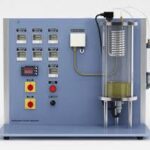1) This method is based on a dimensionless parameter called the heat transfer effectiveness


2) To determine the maximum possible heat transfer rate in a heat exchanger, we first recognize that the maximum temperature difference

3) The heat transfer in a heat exchanger will reach its maximum value when
a) The cold fluid is heated to the inlet temperature of the hot fluid
OR
b) The hot fluid is cooled to the inlet temperature of the cold fluid
4) The fluid with the smaller heat capacity rate will experience a larger temperature change, and thus it will be the first to experience the maximum temperature, at which point the heat transfer will stop. Therefore

5) The effectiveness  of a heat exchanger enables us to determine the heat transfer rate without knowing the outlet temperatures of the fluids.
of a heat exchanger enables us to determine the heat transfer rate without knowing the outlet temperatures of the fluids.
6) Number of transfer units NTU

a) NTU is a measure of the heat transfer surface area
7) It is also convenient to define another dimensionless quantity called the capacity ratio c as

8) It can be shown that the effectiveness of a heat exchanger is a function of the number of transfer units NTU and the capacity ratio c

9) The effectiveness of a heat exchanger depends on the geometry of the heat exchanger as well as the flow arrangement. Therefore, different types of heat exchangers have different effectiveness relations. Here are few




